How to save in office buildings – 9 ways to reduce the energy consumption costs in office buildings
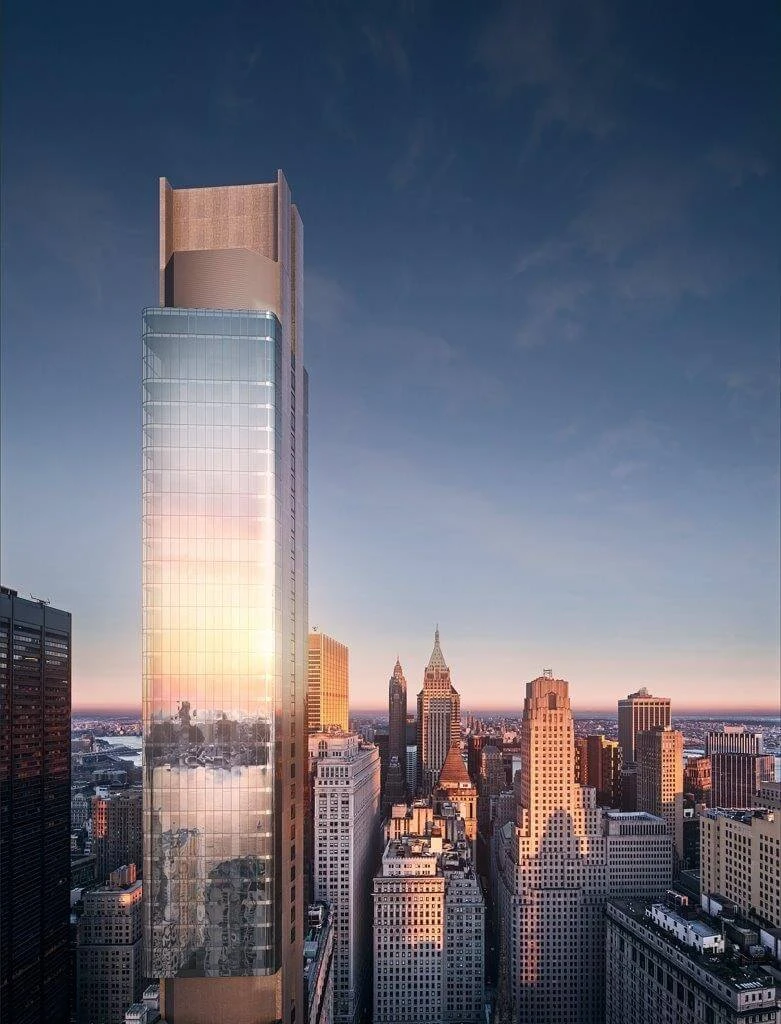
Greenwich, New York, the United States. Systems used: MB-77HS, MB-SE98 SG, MB-SR60N
Energy costs are rising. This means that the owners or tenants of commercial properties must start paying more attention to the operating costs of the buildings they use. Energy savings should be considered during the design stage of the building. It will be more than worth it.
Application of Trias Energetica
The Trias Energetica concept, developed in the Netherlands at Delft University of Technology, is based on three principles:
- use of renewable energy sources,
- efficient use of fossil fuels,
- avoiding unnecessary energy losses
Buildings constructed in the spirit of Trias Energetica achieve up to 30% lower energy demand compared to traditional buildings.
Proper design of zones within a building
The possibility of reducing heat loss comes from an appropriate architectural design that takes into account the way the building will be used. Designing rooms used by employees on the southern and eastern sides, and social rooms, storage rooms, utility rooms, and toilets on the northern side, helps to reduce the heating costs for the spaces where the temperature can be slightly lower.
Energy-efficient windows, doors and facades
Visually appealing and warm? This is possible through the use of energy-efficient systems applied to aluminium windows and doors or building facades. The insulation parameters of the latest aluminium systems allow them to be used, even in passive buildings. This is the best proof that building with aluminium is energy-efficient.
“Aluprof systems, such as MB-104 Passive, MB-86N, and MB-79N, meet the highest energy efficiency standards,” says Michiel van Duren, Managing Director at Aluprof Nederland BV. “Both the aluminium windows and doors in the MB-79N system, which allows for the construction of fixed, casement, and tilt windows, and in the MB-86N system designed for large-scale constructions, offer excellent thermal and airtightness performance.”
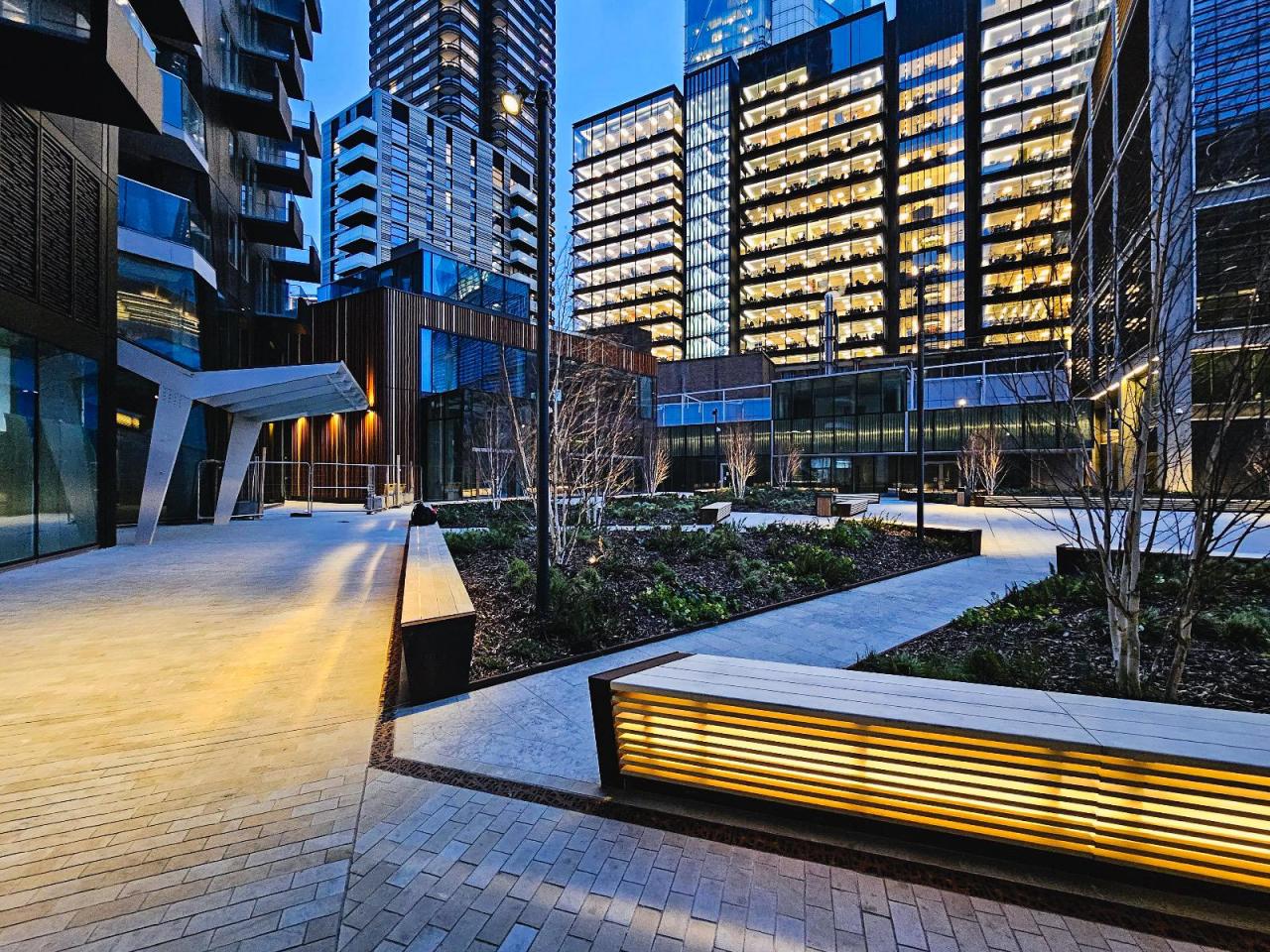
The Stage Building 5, The Stage Marketing Suite, 22 Hewett St, London EC2A 3NL, UK. Systems used: MB-SR50N A EFEKT
Energy-efficient management of available space
While some of the work needs to be done at the structural design level, the internal layout of the workspace can be designed at a later time. By adapting the layout of the rooms to the work cycle of the employees, we gain the ability to reduce heating and lighting costs.
Light partition walls Aluprof MB Harmony Office are ideal for this purpose, enabling the creation of internal glass office cubicles with high acoustic insulation. They answer the need for open-plan offices and allow for more efficient temperature management in the rooms, which can be adjusted to the company’s working mode.
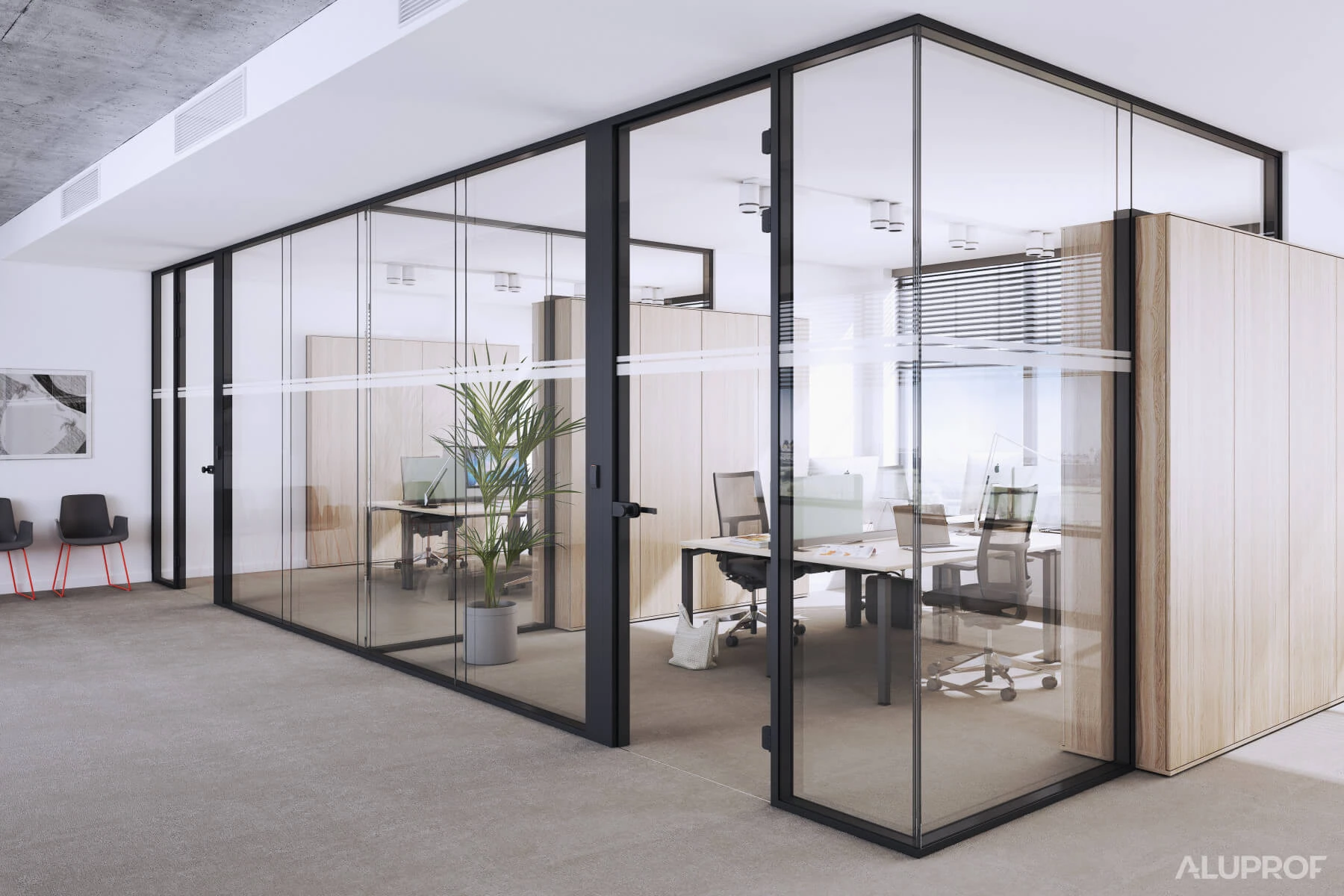
Systems used: MB-Harmony Office
- The choice of an efficient and cost-effective heating method for the building
A good choice is a heat pump, which, when equipped with an additional heat exchanger, can use waste heat from cooling for other purposes, such as heating domestic water.
- The use of photovoltaics and mini wind turbines
Using natural renewable energy sources is becoming increasingly common in commercial construction. It is worth keeping an eye on developments in this area, as more interesting solutions are now emerging on the market, applicable to new and existing projects.
“An example of such a solution in the field of photovoltaics is the roof skylight with quantum dot technology in our MB-SR50N EI system. This is a breakthrough in managing the energy balance of commercial buildings,” explains van Duren.
It is a combination of Aluprof profiles with photovoltaic glazing. The skylight is part of the building's roof (while, of course, meeting the fire safety standards), and at the same time, thanks to its transparency, it illuminates the rooms while generating electricity.
- Green roofs
Typical flat roofs of office buildings can be used for greenery. Not only does this reduce CO2 emissions into the atmosphere, but it also actively supports the building's energy balance. An additional advantage is the pleasant aesthetic space, which can serve as an option for a staff terrace.
A green roof is worth considering, especially when planning a photovoltaic installation. According to research by the Wilhelm Büchner University of Applied Sciences, a plant environment can improve the efficiency of a photovoltaic system by 4-8%.
For green roofs and terraces in office buildings, the new Aluprof product MB-OPENSKY 120 pergola can be used. In the summer season, it provides a covered yet open space – for example, for meetings or work, and in the case of adverse weather conditions, sliding glass panels or screens can be used.
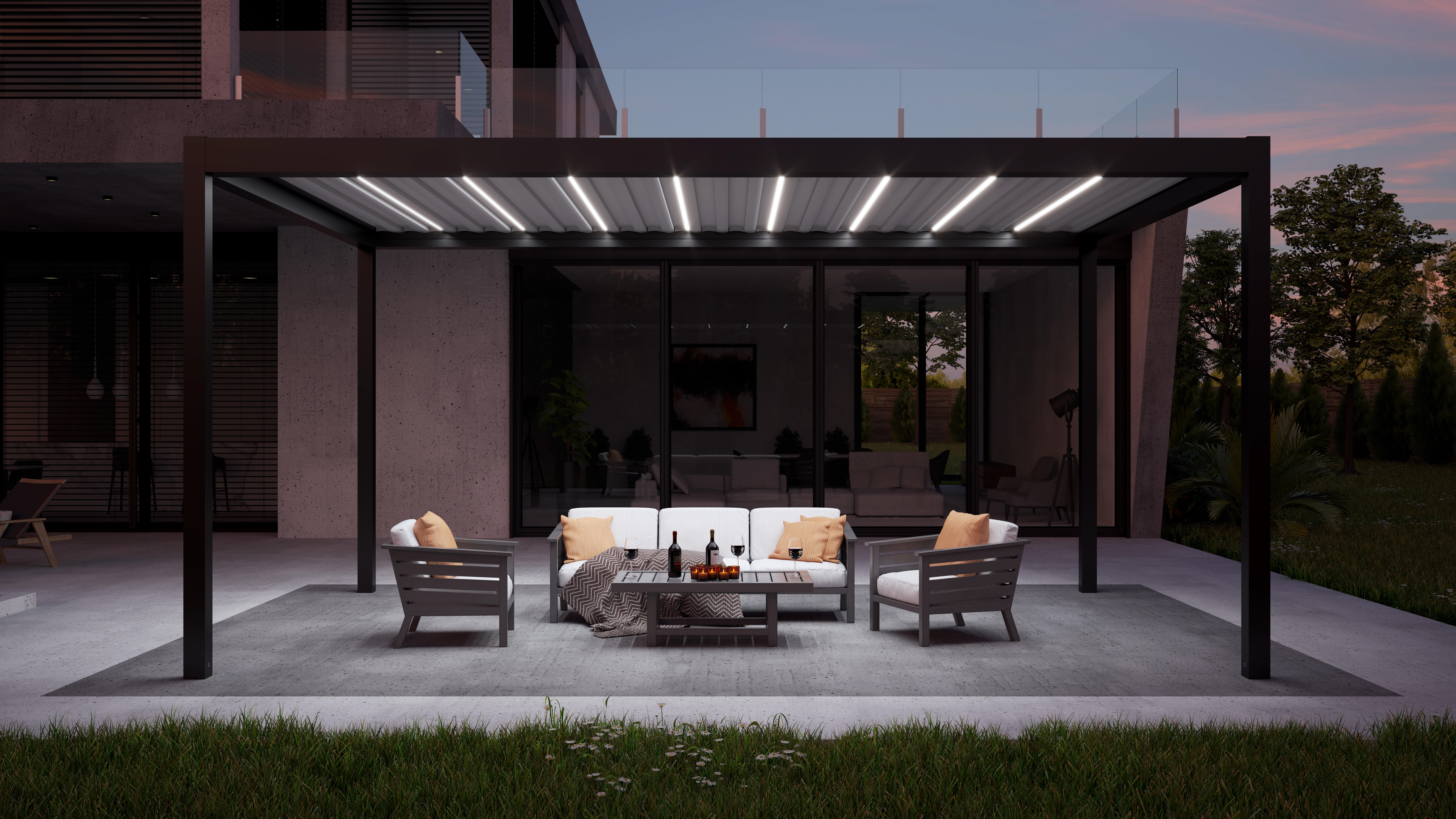
Systems used: MB-OPENSKY 120
- Reduction of building overheating – screens
This solution is ideal for office buildings. Sun shading systems, such as SkyRoll ZIP, CLASSIC, or ECO, ensure a reduction in building overheating while maintaining good visibility to the outside. Specialist fabrics used in the systems create a barrier for light, resulting in no glare on the monitors, allowing employees to work without the need for additional artificial lighting. This is important not only from the perspective of energy savings but, most importantly, for the mental well-being of the employees. Working in natural light has a positive impact on the sense of well-being.
Aluprof screens can be equipped with sun sensors and operate automatically, while the investor can choose the transmission factor (Of) that determines the fabric's transparency.
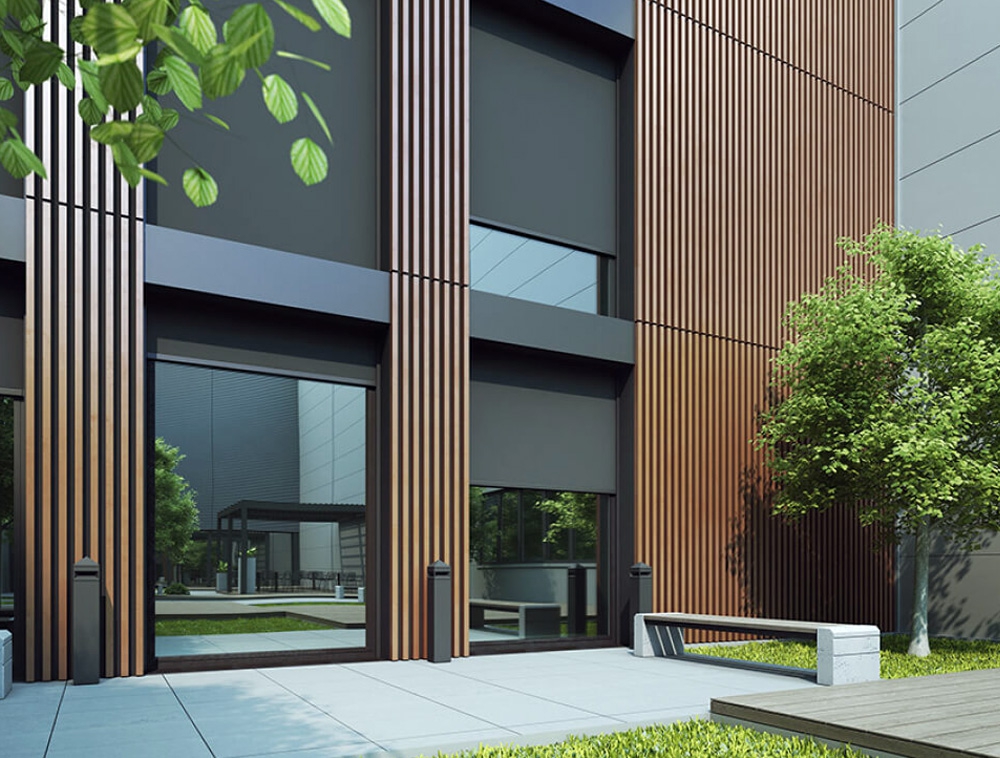
Systems used: SKYROLL Classic
Automation supporting energy savings
One must not forget those solutions that help reduce energy consumption during the building's use. Examples include:
- night-time temperature reduction,
- automation of blinds and window shades based on weather sensors,
- motion sensors (according to a Phillips study, this leads to a 38.2% reduction in lighting costs),
- managing the power consumption of computers and monitors,
- the use of sensors monitoring energy consumption.
Let’s Build a Better Future
Although the reduction of energy consumption in office buildings is mainly driven by cost-saving and environmental reasons, it is important to remember that investors also consider the return on investment and the profitability of the building.
By investing in an energy-efficient building, the investor can be confident that they can achieve higher rental prices. It is also important to remember that, starting this year, the minimum energy class for an office building to be used is C. Demand for buildings with the highest energy class will increase, and investing in energy efficiency from the very beginning guarantees the economic success of the entire project.
